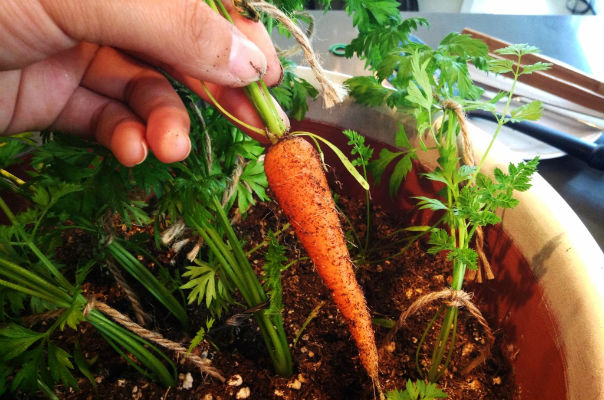
Loading...

Loading...
March 22, 2017 by StacyUncategorized


March 21, 2017 by StacyUncategorized

March 20, 2017 by StacyUncategorized

Safe, non-toxic formulas, techniques and products for cleaning in your home:
1. Homemade Substitutions
2. Formulas
3. Healthy Home Cleaning Habits
March 19, 2017 by StacyUncategorized
*Baking Soda and Vinegar
Mix 1/3rd of a cup of baking soda with 1/3rd of a cup of vinegar in a measuring cup. It will fizz immediately, and you should waste no time pouring it down the clogged drain. The fizzing action will help to remove the gunk, hair, and grime that has built up in the pipe. Let it sit for one hour or even overnight if you can. Flush with hot water. Alternatively, get as much of the dry baking soda as you can down the drain first, then pour on the vinegar.
*Boiling Water
Tips don’t get any easier than this. Put the kettle on (or use the stove or microwave if you don’t own a kettle) and boil up as much water as it will hold. Now pour it slowly down the drain in two to three stages, allowing the hot water to work for a several seconds in between each pour. This is usually the easiest and quickest way to unclog a drain. If there’s any water left, congratulate yourself with a cup of tea.
*Salt and Baking Soda
Mix 1/2 cup of table salt with 1/2 cup of baking soda and pour down the blocked drain. Leave it for 10-20 minutes, then pour boiling water down. The salt, baking soda, and boiling water will produce a chemical reaction that should dissolve some of the nastiest blockages.
*Dish Detergent
If your toilet is clogged, pour 1/4 cup of dish detergent in the bowl. Then boil some water. The dish soap will act as a lubricant and help break up any greasy residue. Then pour the hot water down, and get ready to start plunging. If the plunger doesn’t cut it, rubber gloves may be the next option.
*Baking Soda, Vinegar, Gravity, and Pressure
If your bath drain is clogged, mix up some of the baking soda/vinegar mentioned in tip two. Pour it down the drain, and then place the stopper over it. After 45-60 minutes, fill the bathtub with water. Then, remove the stopper. The pressure of 40-60 gallons of water should be enough to dislodge the blockage that has been loosened by the baking soda and vinegar. You could also try some plunging or the drain snake in conjunction with the weight of the water.
March 18, 2017 by StacyUncategorized

The house centipede is a fairly common household pest. That said, it’s also pretty heinous. When you’ve had one crawl up your leg in the middle of a lecture in a 200-person auditorium, you know that screams often follow their arrival. If you’ve seen more than your fair share of them at home, here’s some good info:
The house centipede has a gazillion legs and two long antennae that stick far out of their bug bodies. Like the silverfish, they like dark, damp places like the basement or under the bathroom sink. They move quickly, like to come out at night, and have no interest in scary humans. Did I mention how prehistoric and ugly they look?
Here’s why you should leave them alone though: they kill other bugs. Like other centipedes, the house variety has poisonous venom that takes out roaches, moths, flies, and termites— you name the creepy crawly, and this centipede probably offs it. They even take care of bed bugs!
And that’s pretty much all they do (aside from scaring the bejeezus out of you). They don’t carry disease, or nibble on your wooden siding. They don’t go after human food. Just bugs.
That said, I wouldn’t pick one up with my bare hands. You read the part about poisonous venom right? Even if you are bitten, it might sting a bit but you’ll be fine. But there’s no reason you need to touch them. If one’s in plain sight, just sweep it into a container and return it outside or to your basement, and all will be well.
PREVENTION
The best deterrent is to make the conditions less ideal for them and getting rid of any means of entry into the home.
 Asparagus Fern
Asparagus Fern
The asparagus fern (also called emerald feather, emerald fern, sprengeri fern, plumosa fern or lace fern) is toxic to dogs and cats. The toxic agent in the plant is sapogenin — a steroid found in a variety of plants. If a dog or cat ingests the berries of this plant, vomiting, diarrhea and/or abdominal pain can occur. Allergic dermatitis (skin inflammation) can occur if an animal is repeatedly exposed.
 Corn Plant
Corn Plant
Corn plant (also known as cornstalk plant, dracaena, dragon tree or ribbon plant) is toxic to dogs and cats. Saponin is the offensive chemical compound in this plant. If the plant is ingested, vomiting (with or without blood), appetite loss, depression and/or increased salivation can occur. Affected cats may also have dilated pupils.
 Dieffenbachia
Dieffenbachia
Dieffenbachia (commonly known as dumb cane, tropic snow or exotica) is toxic to dogs and cats. Dieffenbachia contains a chemical that is a poisonous deterrent to animals. If the plant is ingested, oral irritation can occur, especially on the tongue and lips. This irritation can lead to increased salivation, difficulty swallowing and vomiting.
 Elephant Ear
Elephant Ear
Elephant ear (also known as caladium, taro, pai, ape, cape, via, via sori or malanga) contains a chemical similar to that in dieffenbachia, so an animal’s toxic reaction to elephant ear is similar: oral irritation, increased salivation, difficulty swallowing and vomiting.
 Lilies
Lilies
Many plants of the lily family are toxic to cats, and some are toxic to dogs. Cats are the only animals in which the Easter and stargazer lilies are known to be toxic. Generally, a cat’s first reaction to this plant includes vomiting, lethargy and lack of appetite, but kidney failure and even death can quickly follow if a cat is untreated. The peace lily (also known as Mauna Loa) is toxic to both dogs and cats. Ingestion of the peace lily or calla lily can cause irritation of the tongue and lips, increased salivation, difficulty swallowing and vomiting.
 Cyclamen
Cyclamen
Cyclamen (also known as sowbread) is a pretty, flowering plant that is toxic to dogs and cats. If ingested, this plant can cause increased salivation, vomiting and diarrhea. If an animal ingests a large amount of the plant’s tubers — which are found at the root, generally below the soil — heart rhythm abnormalities, seizures and even death can occur.
 Heartleaf Philodendron
Heartleaf Philodendron
Heartleaf philodendron (also known as horsehead philodendron, cordatum, fiddle leaf, panda plant, split-leaf philodendron, fruit salad plant, red emerald, red princess or saddle leaf) is a common, easy-to-grow houseplant that is toxic to dogs and cats. This philodendron contains a chemical that can irritate the mouth, tongue and lips of animals. An affected pet may also experience increased salivation, vomiting and difficulty swallowing.
 Jade Plant
Jade Plant
Jade plant (also known as baby jade, dwarf rubber plant, jade tree, Chinese rubber plant, Japanese rubber plant or friendship tree) is toxic to both cats and dogs. The toxic property in this plant is unknown, but ingestion can cause vomiting, depression, ataxia (incoordination) and bradycardia (slow heart rate; this is rare).
 Aloe Plant
Aloe Plant
Aloe plant (also known as medicine plant or Barbados aloe) is a common succulent that is toxic to dogs and cats. Aloin is the toxic agent in this plant. The bitter yellow substance is found in most aloe species and may cause vomiting and/or reddish urine.
 Satin Pothos
Satin Pothos
Satin pothos (also known as silk pothos) is toxic to dogs and cats. If ingested by a cat or dog, the plant may irritate the mouth, lips and tongue. The pet may also experience increased salivation, vomiting and/or difficulty swallowing
March 14, 2017 by StacyUncategorized
This article is great for those people that don’t have an outside area to grow a garden and for those that might not want all the work that comes along with a garden. Learn how to grow 16 edible plants in the convenience of your indoor space.

March 13, 2017 by StacyUncategorized
Camping is an outdoor recreational activity involving overnight stays away from home in a shelter such as a tent, a caravan, or even a motor home. Generally participants leave developed areas to spend time outdoors in more natural ones in pursuit of activities providing them enjoyment.
If this describes you here is a great read from HiConsumption